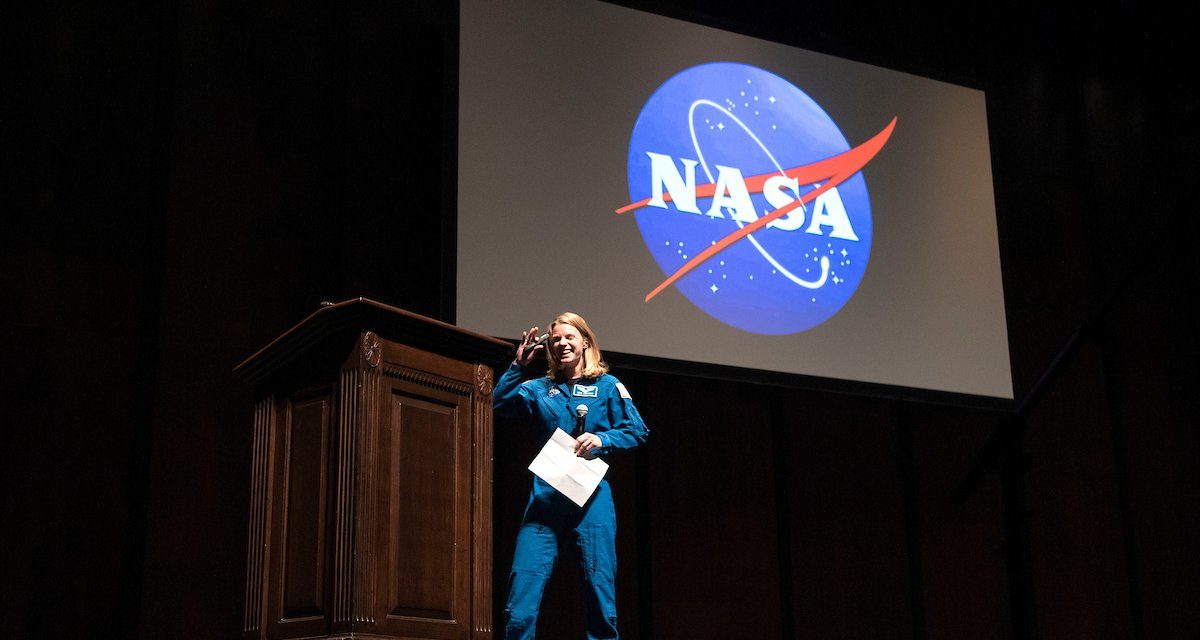Zena Cardman was a graduate student at UNC when she got a phone call from NASA.
“We at least knew the day that we would be getting a yes-or-a-no call,” Cardman recalled. “So, when the phone range with a Houston area code, I had an idea of who was calling, but I was fully expecting it to be a, ‘thank you for your time but better luck in the next application cycle.’
“So, when it was good news, I was just so utterly overwhelmed. I’ll never forget that moment; it was amazing.”
With that call, Cardman had been accepted into the 2017 Astronaut Candidate class. Now, she could be part of NASA’s Artemis mission, which is aiming to put the first female on the moon by 2024.
Cardman was on UNC’s campus during research week earlier this month, touting the Artemis program and pitching the idea of working for NASA to young researchers all over the campus.
“Being part of research as an undergraduate was a huge part of my education,” she said. “Classroom training’s super important as well, but so is finding your own interest and how you can contribute creatively to the scientific process or whatever is your interest. And it’s definitely never too early to start.”
Cardman said that finding interests in different research fields, including trips to Antarctica and the Arctic, led her to the ultimate desire for space exploration.
“I loved the science aspect of it, but I also really loved the operational side and the logistics and how many people it takes to put something like that together. To me, working on the space station is the ultimate field research endeavor.”
NASA deputy administrator Jim Morhard was a teenager when he watched the Apollo mission carrying astronauts to the moon 50 years ago. And UNC played a big role in that mission, training astronauts at the Morehead Planetarium to navigate by stars. Sitting beside the Morehead Planetarium on that visit this month, he said this mission – and the success of NASA’s space exploration as a whole – is reliant on getting young researchers interested in the field.
“It’s your generation that’s going to take us to Mars,” Morhard said of his pitch to current students. “And we need to be talking to you and trying to entice you to come with us now.”
The Artemis program aims to land astronauts on the lunar surface by 2024, before establishing a sustained presence on the surface by 2028. Morhard said this would help NASA in its mission to send astronauts to Mars.
“We know that there are methane cycles on Mars,” Morhard said. “We believe there’s water; where there’s water, there’s usually life. I’m not saying there’s life there, by any means, but we need to go there to find out.”
And just who those astronauts will be as part of this new mission is drawing attention, as NASA has said that the first woman to land on the moon will be carried by the Artemis program. For Cardman, that can be attributed to the decades of work leading up to this mission.
“For a lot of us, you’re just doing a job; you’re executing a job,” she said. “But there are so many people who broke those boundaries before me and made it possible for me to have this job.”
UNC alumna and NASA astronaut candidate Zena Cardman speaking on Chapel Hill campus / Photo via UNC – Chapel Hill
Related Stories
‹
![]()
On Air Today: UNC Science Expo at Morehead Planetarium This WeekendMorehead Planetarium Community Engagement Specialist Will Freund spoke with 97.9 The Hill's Andrew Stuckey on Tuesday, April 1. He discussed the upcoming UNC Science Expo, running from 11am-4pm Saturday, April 5. The UNC Science Expo is a signature event of the North Carolina Science Festival. Learn more about one of the biggest science celebrations in our state at Moreheadplanetarium.org. He discussed the planning of the event, what visitors can expect, and more.

Bill Nye Set to Visit Chapel Hill as Part of Democratic Campaign; Here's Where He Will BeScience advocate and television star Bill Nye is set to make an appearance in Chapel Hill on Saturday as part of the North Carolina Democratic Party's campaign.
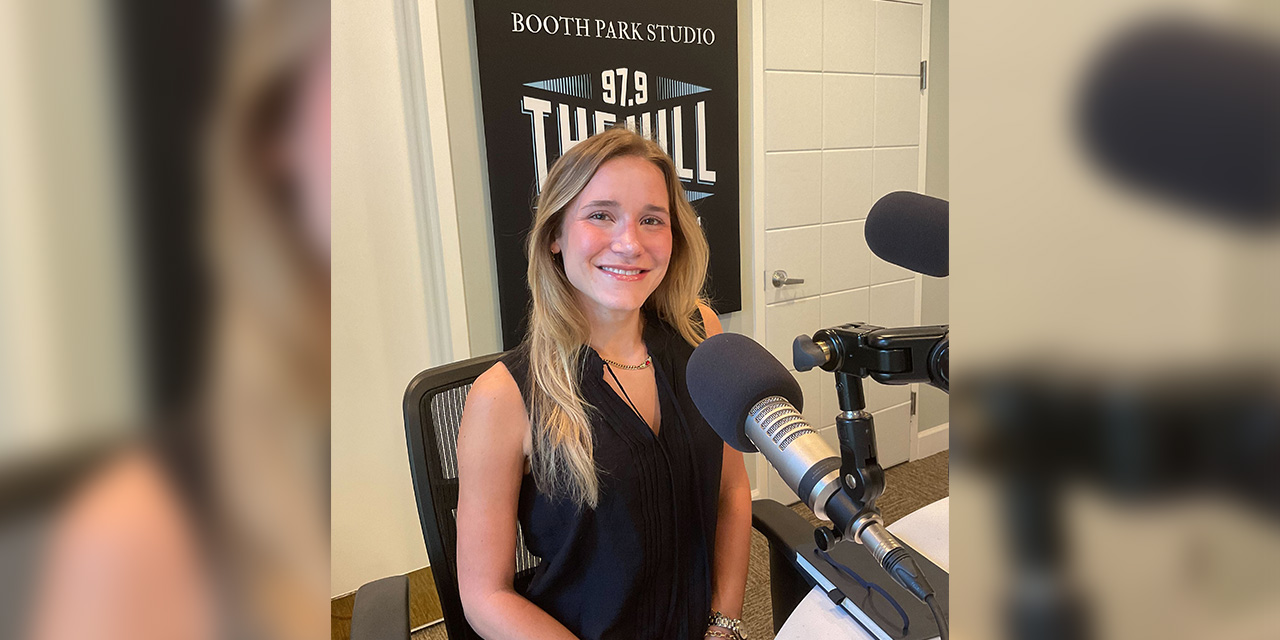
'Born Loving Space': UNC Senior Set To Make History as the Youngest Woman in Outer SpaceUNC senior Karsen Kitchen is set to make history as the youngest woman to travel to outer space as part of an upcoming space tourism flight.
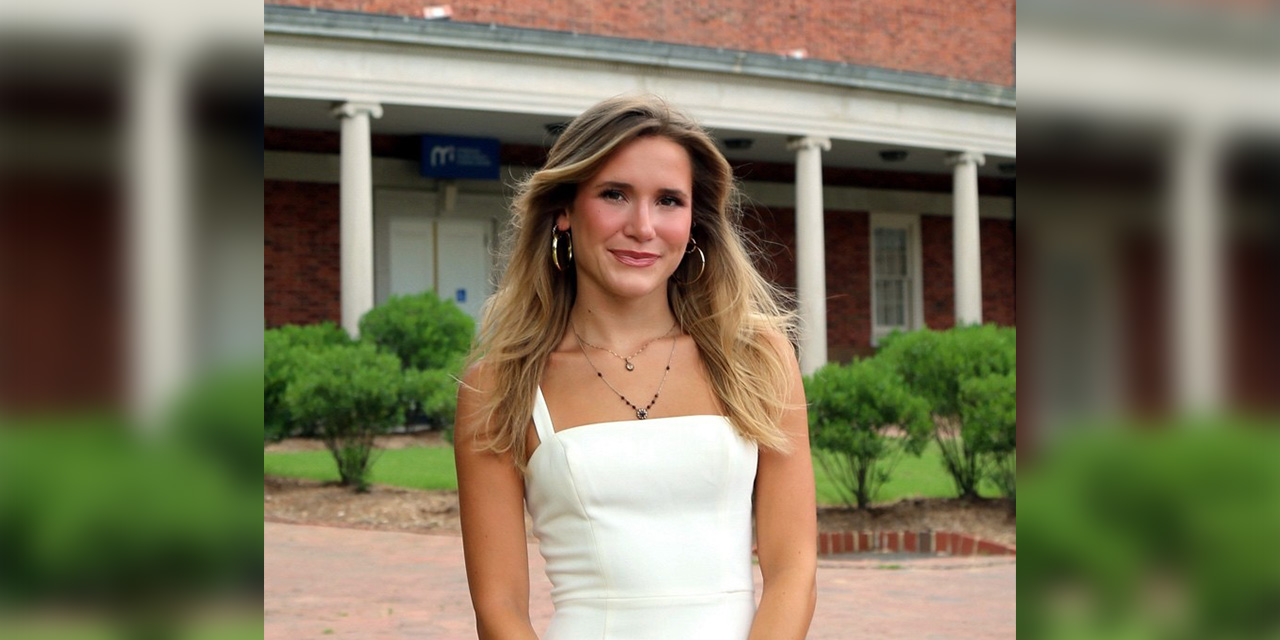
Rising UNC Senior Among Crew Announced for Future Blue Origin Space FlightKarsen Kitchen, a member of UNC's Class of 2025, is one of the six crew members announced for Blue Origin's next flight to the edge of space.
![]()
On Air Today: Amy Sayle of UNC's Morehead PlanetariumAmy Sayle, who is a science education specialist for UNC’s Morehead Planetarium and Science Center, joins 97.9 The Hill’s Brighton McConnell on Wednesday, August 9. With the Perseid meteor shower expected to peak in visibility this weekend, the planetarium is teaming up with the Raleigh Astronomy Club to host a free watch-along party on Saturday, […]
![]()
On Air Today: Will Freund, Community Engagement Specialist for Morehead PlanitariumCommunity Engagement Specialist for the Morehead Planetarium and Science Center, Will Freund joined 97.9 The Hill's Andrew Stuckey on Wednesday, March 29th. He discussed the upcoming UNC Science Expo, which is the kick-off event for the month-long North Carolina Science Festival. He also discussed programs at the Morehead Planetarium and Science Center, and more.

UNC Student Competes, Wins on 'Jeopardy!'Stephanie Pierson, a junior history major at UNC originally from Macon, GA, made her second appearance on “Jeopardy!” Wednesday night. Pierson first appeared on the show when she was in high school, and made her latest appearance as part of the show’s two-week High School Reunion Tournament. But she did more than just show up […]
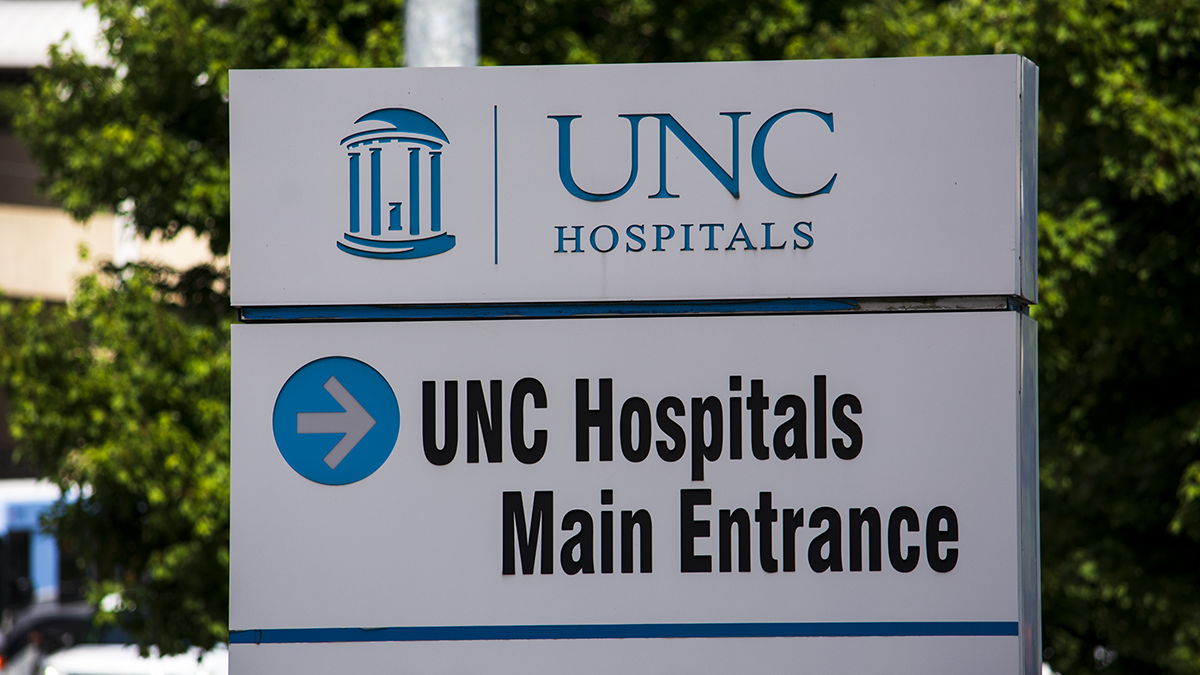
UNC Schools, Morehead Planetarium Make Medical Supply DonationsThe North Carolina Department of Health and Human Services says it requested 500,000 each of N95 masks, gowns, gloves, face shields and coveralls from the federal stockpile to help health care workers be properly protected while treating patients. As of Sunday, all amounts of that PPE, or personal protective equipment, are less than requested. That’s […]
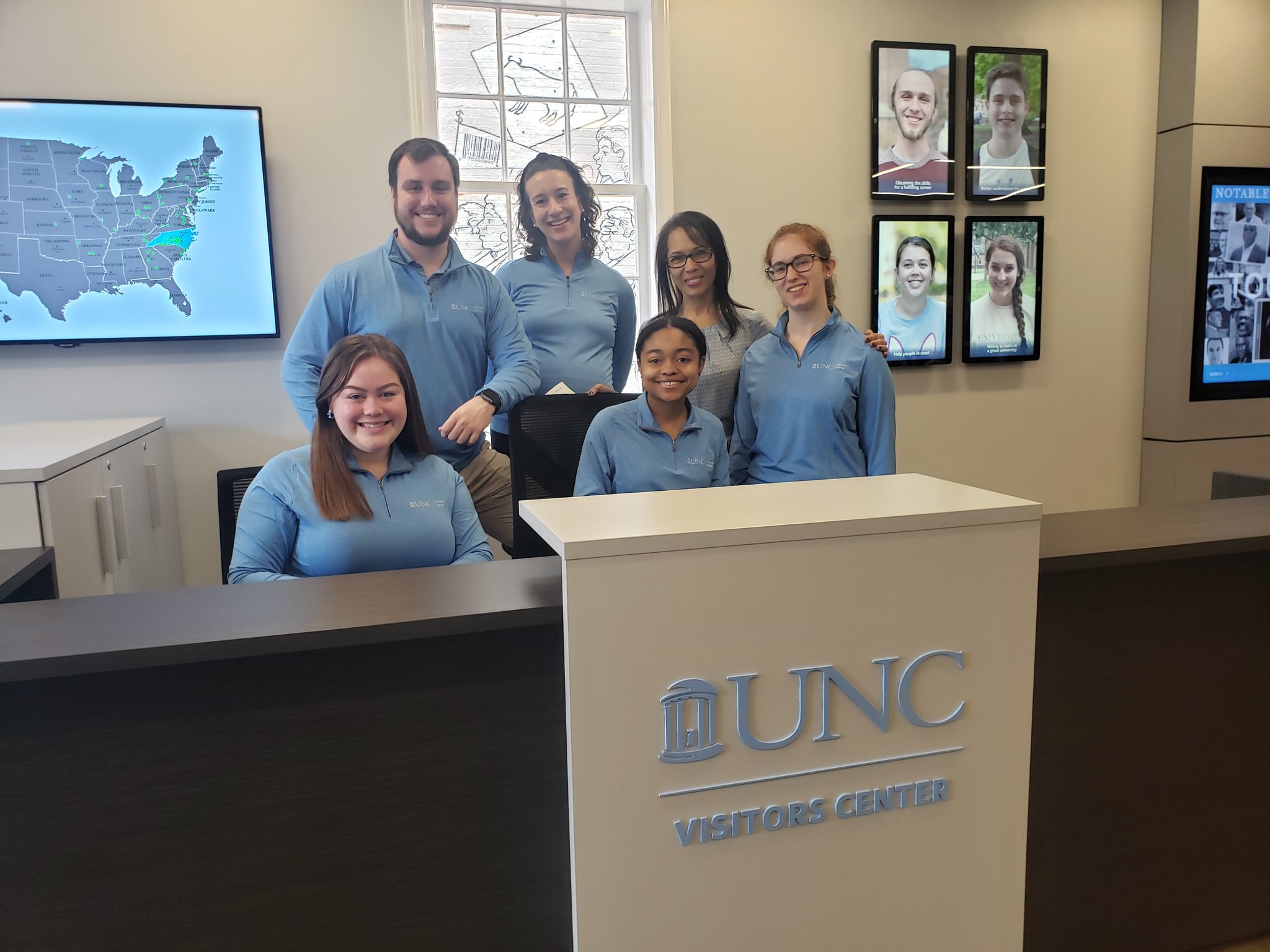
New UNC Visitors Center Prepares to Open on Franklin StreetThe UNC Visitors Center will soon welcome guests to its new home on Franklin Street, located between the Carolina Coffee Shop and Benny Cappella’s. The visitors center was pushed out of its previous location in Morehead Planetarium as the planetarium undergoes renovations. The center has been relocated and revamped to give visitors a new way […]
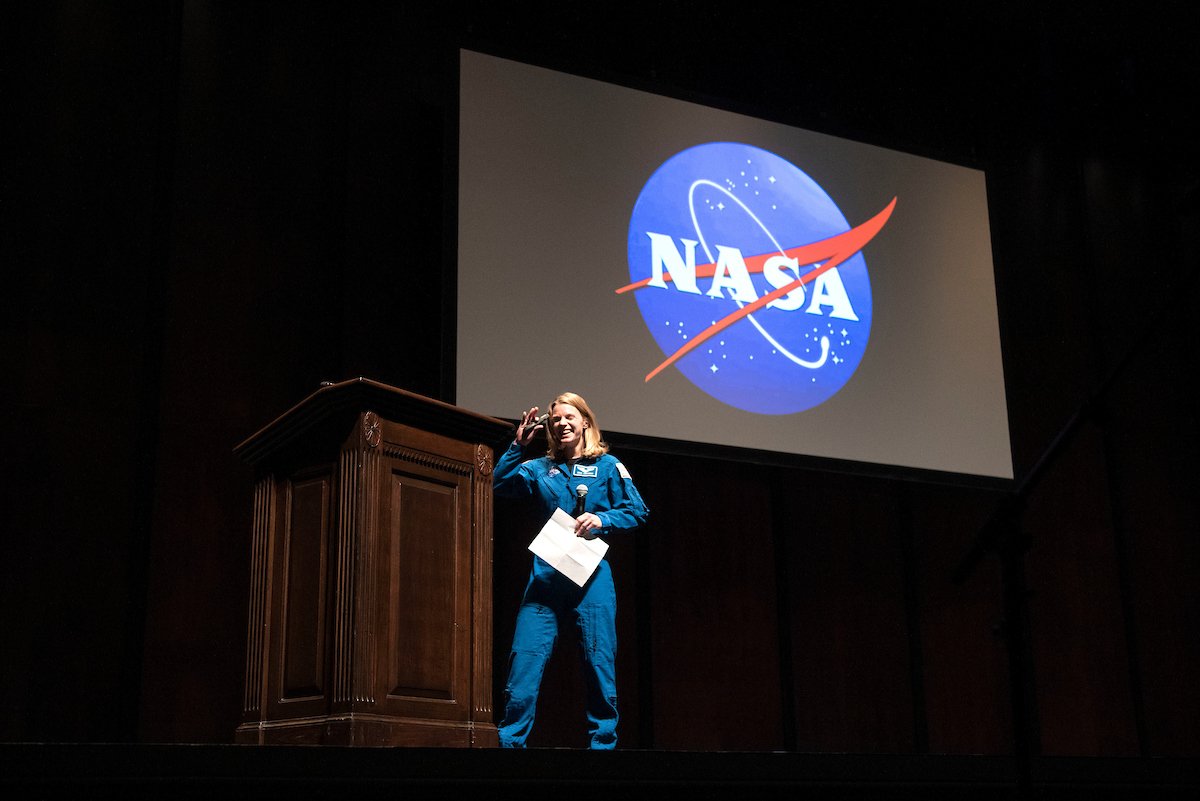
UNC Alumna Returns to Campus Pitching NASA MissionZena Cardman was a graduate student at UNC when she got a phone call from NASA. “We at least knew the day that we would be getting a yes-or-a-no call,” Cardman recalled. “So, when the phone range with a Houston area code, I had an idea of who was calling, but I was fully expecting […]
›

